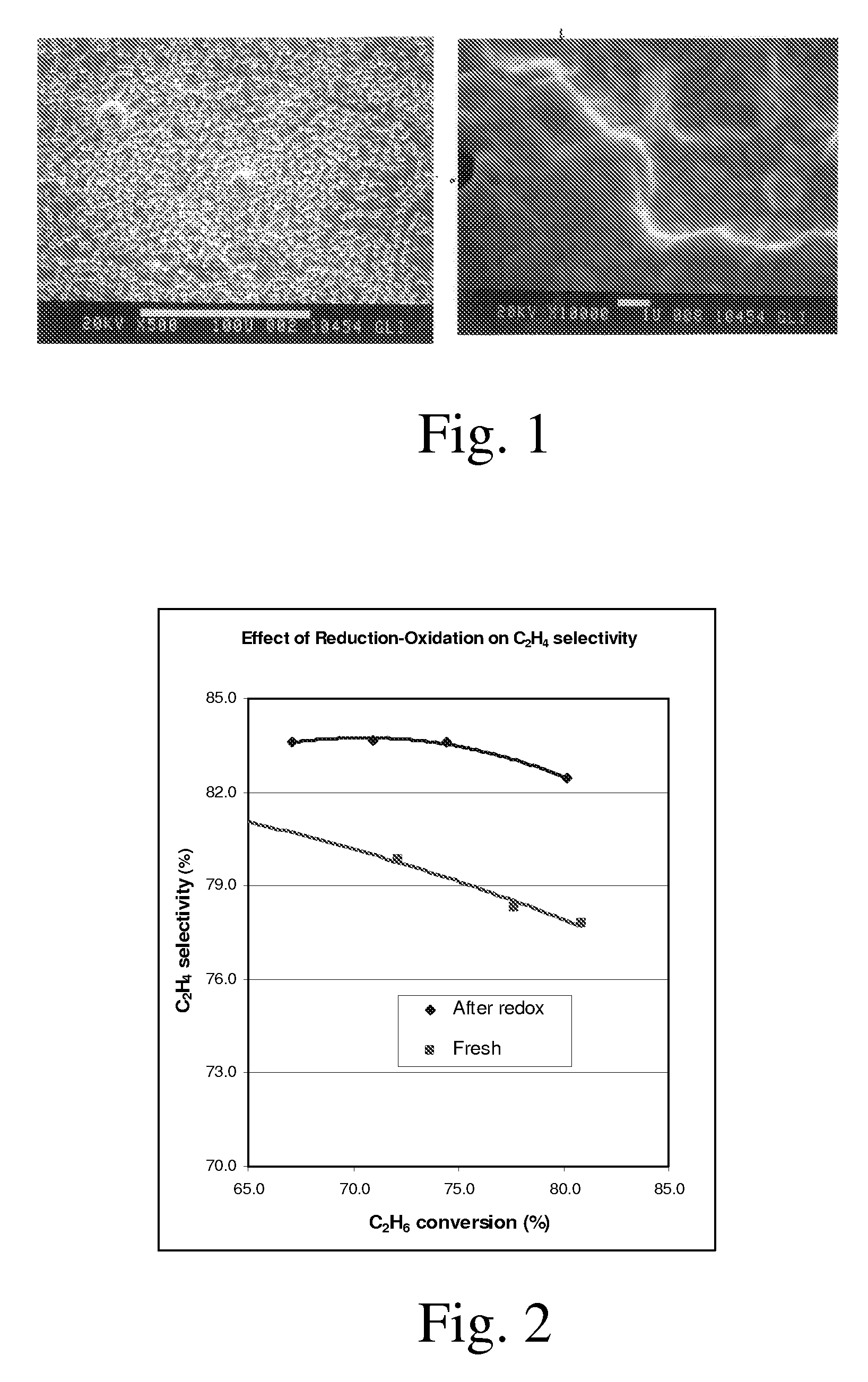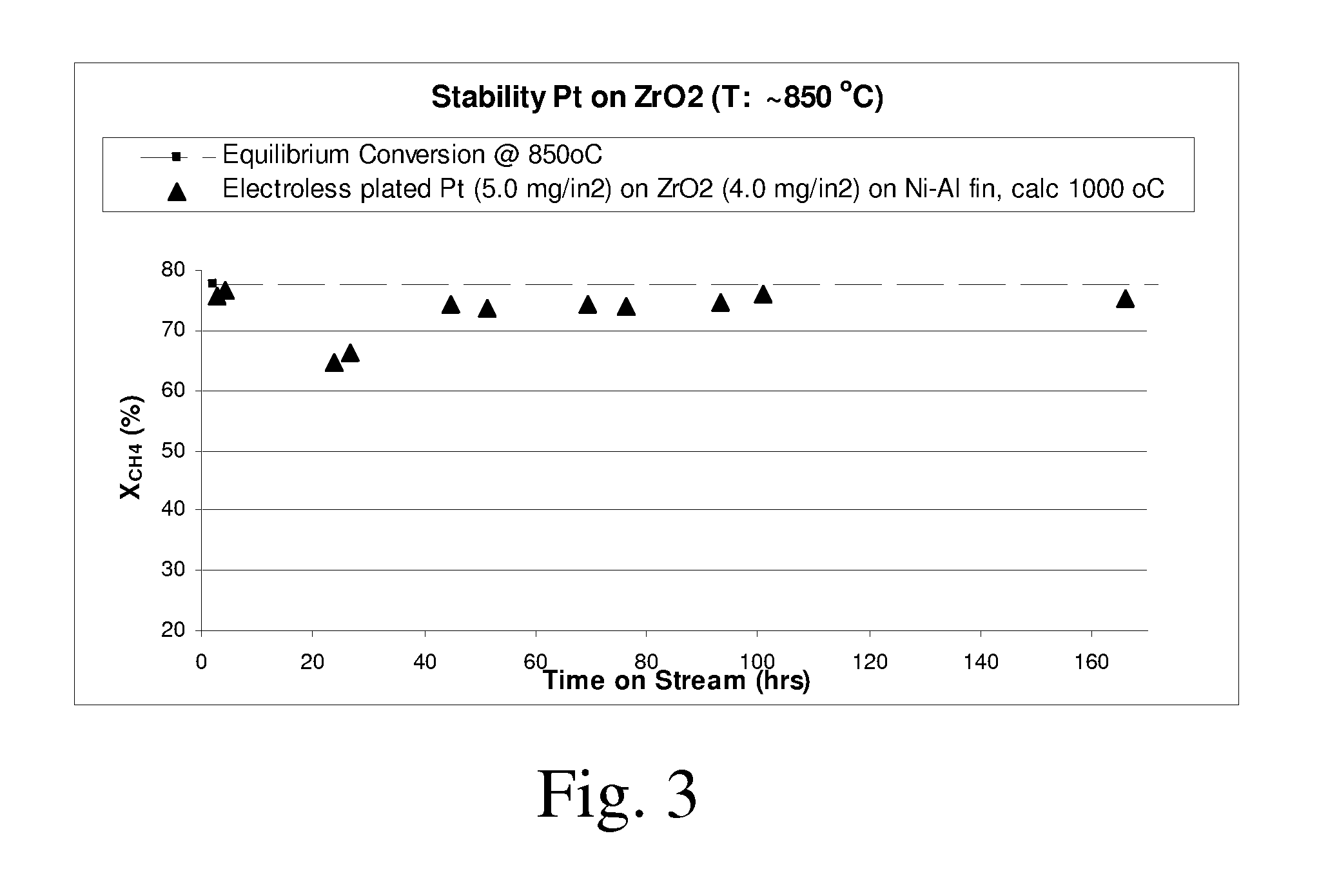Electroless plating in microchannels
a microchannel device and electroless technology, applied in metal/metal-oxide/metal-hydroxide catalysts, metal/metal-oxide catalysts, hydrocarbon preparation catalysts, etc., can solve the problems of bubbles promoting non-uniformity of rh coating, difficult to manufacture catalyst coatings with long-term mechanical and chemical stability, etc., to achieve good catalysts for water gas shift reactions, enhance the plating rate, and suppress cooking
- Summary
- Abstract
- Description
- Claims
- Application Information
AI Technical Summary
Benefits of technology
Problems solved by technology
Method used
Image
Examples
example 1
[0114]A Ni-aluminide coupon (0.01 in×0.35 in×1 in) was heated to 1050° C. in flowing H2 at 3.5° C. / min heating rate. After purging with Ar for 1 hour at 1050° C., the gas is changed to 21% O2 / Ar. The coupon was heat-treated in flowing O2 / Ar for 10 hours and then cooled to room temperature. An α-Al2O3 scale was generated on the surface after the heat treatment.
[0115]A solution consisting of Pt(NH3)4(NO3)2 (0.2 wt % Pt) and 0.2 wt % N2H4.H2O was prepared. The heat-treated coupon was put into the solution with stirring. The plating was performed at 60° C. for 7 hours. Subsequently, the coupon is rinsed with water and dried with blowing air. Around 2.2 mg / in2 of Pt was plated on the surface.
example 2
[0116]A solution containing Pt(NH3)4(OH)2 (0.2 wt % Pt) and 0.2 wt % N2H4H2O was prepared. An alloy 617 coupon (0.01 in×0.35 in×1 in) was hung in the solution at room temperature. The solution was stirred for 24 hours. Subsequently, the coupon was rinsed with water and dried with blowing air. The weight gain of the coupon was 8.5 mg / in2.
example 3
[0117]A Ni-aluminide coupon (0.02 in×0.2 in×1 in) was heated to 1050° C. in flowing H2 at 3.5° C. / min heating rate. After purging with Ar for 1 hour at 1050° C., the gas was changed to 21% O2 / Ar. The coupon was heat-treated in following O2 / Ar for 10 hours and then cooled to room temperature. An α-Al2O3 scale is generated on the surface after the heat treatment.
[0118]The coupon was hung in a solution containing 0.2 wt % Pt as Pt(NH3)4(OH)2 and 0.2 wt % NaBH4 at room temperature. The solution was stirred for 5 hours. Subsequently, the coupon was rinsed with water and dried with blowing air. The weight gain of the coupon was 4.8 mg / in2.
PUM
| Property | Measurement | Unit |
|---|---|---|
| temperature | aaaaa | aaaaa |
| temperature | aaaaa | aaaaa |
| temperature | aaaaa | aaaaa |
Abstract
Description
Claims
Application Information
 Login to View More
Login to View More - R&D
- Intellectual Property
- Life Sciences
- Materials
- Tech Scout
- Unparalleled Data Quality
- Higher Quality Content
- 60% Fewer Hallucinations
Browse by: Latest US Patents, China's latest patents, Technical Efficacy Thesaurus, Application Domain, Technology Topic, Popular Technical Reports.
© 2025 PatSnap. All rights reserved.Legal|Privacy policy|Modern Slavery Act Transparency Statement|Sitemap|About US| Contact US: help@patsnap.com


